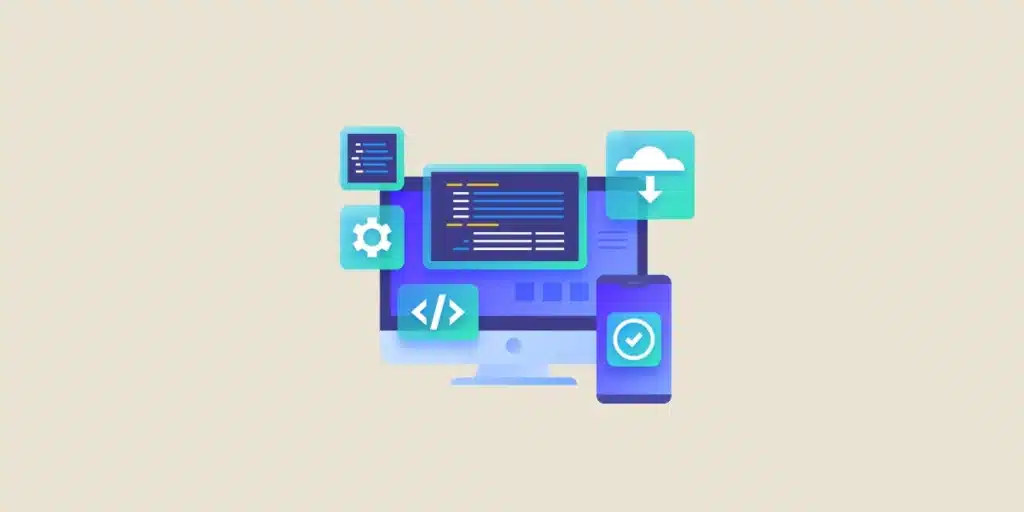IDL (Interactive Data Language) is a programming language specifically designed for analyzing and visualizing complex data. Learn about its history, how it operates, its advantages, and how to master it!
To perform their tasks effectively, scientists, engineers, and researchers often need to analyze and visualize extremely complex data. To assist them in this endeavor, a tool was created for intuitive data manipulation, enabling the creation of interactive visualizations and the interpretation of phenomena.
IDL’s ability to quickly process vast amounts of data and generate sophisticated graphic representations makes important information visually accessible and clear. Known as IDL or Interactive Data Language, this tool has become indispensable in fields like astronomy, climatology, and physics!
A Language Created by a Physicist in the '70s
In the mid-1970s, the use of computers in research laboratories was rapidly expanding. Recognizing this, physicist David Stern aimed to provide scientists with an efficient and easy way to analyze numerical data, ultimately developing IDL. Initially, it was targeted at the astrophysics community, where the need to process large amounts of observational data was particularly acute.

However, the language quickly gained acceptance across other scientific disciplines. Its capability to convert raw data into clear and usable visualizations made it particularly appealing. Over time, IDL has evolved, yet it remains faithful to its core mission: enabling interactive data analysis that is accessible to researchers without advanced programming skills.
An Invaluable Tool for Scientists
IDL is tailored to meet the demands of data analysis, offering numerous possibilities for scientists and engineers. It simplifies working with matrices, vectors, and other complex data structures, facilitating statistical analysis and advanced mathematical computations.
Operations involving matrices are optimally designed, making analysis swift and efficient. Thus, it serves as an ideal language for manipulating numerical data. Furthermore, IDL is renowned for its visualization capabilities. Users can interactively generate 2D and 3D graphs, which aids in visually representing and interpreting data sets.
It allows for the generation of curves, scatter plots, heat maps, and much more—making it straightforward to uncover hidden information within data! IDL is also extensively utilized for image processing and analysis. Its integrated algorithms enable image manipulation and enhancement, thus becoming a favored choice in fields like astronomy and medicine, where image analysis is critical.
Additionally, its robust graphical library enables the creation of complex visualizations such as 3D surfaces, volume renderings, and animations. These tools significantly ease data exploration and the presentation of results.
Astronomy, Climatology… Numerous Applications
Owing to its flexibility and powerful data manipulation capabilities, IDL is widely employed across various scientific and technical domains. It is especially favored among astrophysicists and astronomers, who use it for analyzing data from telescopes and satellites.
Researchers can easily visualize star maps or analyze cosmic signals, enhancing the understanding of celestial phenomena. Meanwhile, climatologists use IDL to handle substantial amounts of meteorological data, allowing them to visualize trends, monitor climatic events, and develop predictive models.
Engineers and physicists also rely on IDL for signal processing and simulating intricate systems. Its interactive interface supports dynamic parameter adjustments and result analysis, proving invaluable for system design and experimental research.
IDL is also applied in medical image analysis, for instance, when processing MRI or scanner data. This capability enables researchers to segment images, detect anomalies, and facilitate diagnoses.

In all these areas, IDL proves to be a powerful tool for data manipulation and visualization, aiding in interpreting complex phenomena otherwise challenging to comprehend.
Across these fields, IDL is a vital tool for data manipulation and visualization, enhancing the interpretation of intricate phenomena that are otherwise tough to grasp.
What Are the Advantages?
IDL’s interface provides an interactive environment that allows users to explore data in real time, thereby streamlining the discovery and analysis process. Graphics and results are generated instantaneously, offering quick insights into the studied phenomena.
Additionally, its extensive built-in graphical and mathematical libraries come equipped with tools for advanced 2D and 3D visualization, statistical analysis, and image-processing algorithms.
These libraries make IDL particularly well-suited to scientists’ needs. It is also often employed in projects that require handling large datasets. By offering flexible data processing and visualization, this language is a preferred tool for large-scale research projects with frequently evolving requirements.
However, its licensing cost can be prohibitive for small teams or independent researchers, making it less accessible compared to free or open-source alternatives like Python. Also, it may be challenging for those without a programming background. Its unique syntax and methodology demand a learning period, which may slow down the integration of new users. This is why training can be a valuable aid!
IDL Versus Its Rivals: A Comparison with Similar Languages
IDL is often compared to MATLAB for their similar capacities in data analysis and visualization. Although MATLAB is more widely used, particularly in engineering and industry, IDL stands out due to its robust presence in scientific domains.
This is especially true in areas like astronomy and geophysics. Nevertheless, MATLAB offers a broader ecosystem and more extensive community and industry support compared to IDL. As Python gains popularity in the scientific community, IDL faces increasing competition. With libraries like NumPy, SciPy, and Matplotlib, Python provides a free and potent alternative.
Though preferences often lean towards cost-effectiveness and flexibility, IDL maintains an edge in terms of ready-to-use features and streamlined interactive visualizations.
Another language frequently used in the scientific world is R, particularly in statistics and data analysis.
Like Python, R is free and enjoys a substantial community. However, IDL’s interface proves to be more interactive for real-time visualization of complex data, offering a potential advantage for scientists aiming for a fluid, visual data manipulation experience… Despite being eclipsed by modern open-source tools, IDL retains a loyal following in disciplines that emphasize its graphical prowess and ease of use in specialized scientific applications.

Moreover, IDL now facilitates integration with environments like Python, easing collaborative work on hybrid projects. By harnessing the strengths of both domains, researchers can enhance their analytical abilities and capitalize on advances in each technology.
IDL, a Powerful Language for Scientific Data Analysis
In scientific and technical research, IDL remains a powerful and specialized tool for analyzing and visualizing complex data. Its core strengths are an intuitive interactive interface and an advanced graphical library, along with the ability to efficiently process large data volumes.
Its application in specialized fields such as astronomy, climatology, and physics showcases the unique advantages it offers to those who need to understand complex phenomena through visualization.
If you’re looking to master IDL, consider DataScientest. Our courses provide training on the best tools and skills necessary for pursuing diverse careers in data science: Data Analyst, Data Scientist, Data Engineer…
All our training programs are practice-focused, emphasizing skillful tool handling, and lead to obtaining a state-certified diploma and a professional certification. Our courses are fully online, structured in BootCamp, alternating, or continuous formats. Our institution is eligible for funding through CPF or France Travail. Discover DataScientest!
You now know everything about IDL. For further insights, check out our article on Python and our article fully dedicated to DataViz!










